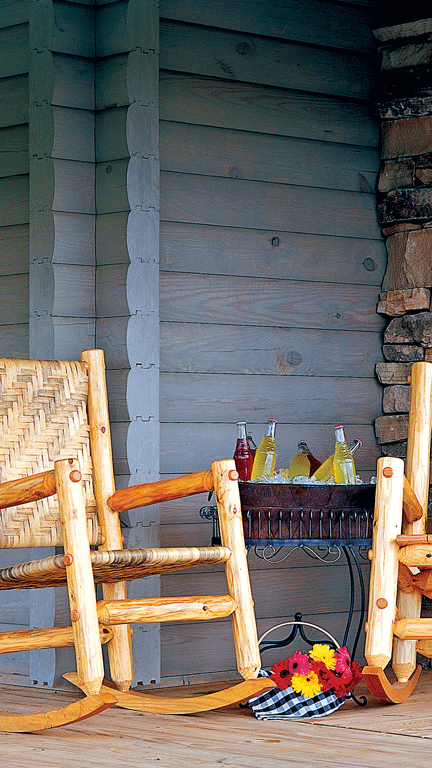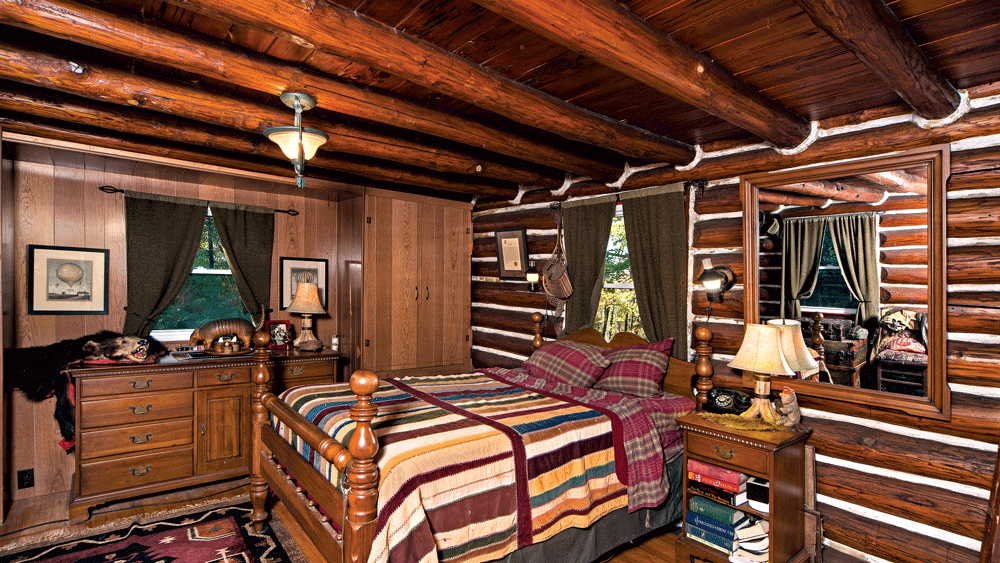Though the way the shade of stain makes your log home look is a major consideration, there’s more to
selecting a stain than meets the eye. In addition to wanting to make sure you choose the right color, you’ll also want to pick a product that performs to your expectations, both in terms of initial application and future touch-ups. Also, consumers have become more conscientious about environmental issues and actively opt for
eco-friendly options. But for most, longevity is just as important as going green.
Staining a log home can be time-intensive, and because of that, owners want to complete the task as few times as necessary while still keeping their logs in top-top shape. Fortunately, there are a few ways to ensure that the product you chose will be as efficient as possible.
First and foremost, make sure the wood is clean and ready to absorb or adhere with any product you select. Next, you need to follow the manufacturer’s application recommendations to the letter, whether you apply via pump or brush. Once you
choose a brand, it’s important to stick with that brand (unless you plan to remove the original product and start from scratch). Most manufacturers have designed their products as a system, and venturing outside of those parameters can hinder products from working as effectively as they should.

Products on the market are typically either water-based or oil-based, and each has advantages and disadvantages. Water-based stains typically dry faster than oil, which is convenient, but for the DIYer, they may not be as forgiving as oil-based products when it comes to achieving an even application. On the flip side, water-based stains are easier to clean up. Both have features to consider in terms of volatile organic compounds (VOCs) and longevity, with water-based stains tending to be lower in VOCs but oil-based stains tending to last longer. However, the manufacturers of oil-based products, such as ISK Biocides’ WOODguard, have taken note of the need for long-lasting stains that are environmentally kind and have begun offering formulas that are VOC-compliant in all 50 states (even super-stringent California).
“It’s not as black and white as some people like to make out as far as which is more environmentally friendly,” says John Schroeder, marketing director for
Schroeder Log Home Supply, in regard to oil-based versus water-based stains. “People are, from our experience, more concerned about performance. And that goes with insecticides, wood-preservation additives and stain color. They want to do it less frequently, so they want something that performs.”
After making your selection, purchase enough stain to fully cover the initial application on your home and future applications and touch-ups. Buying it all at once will help ensure the color will match precisely.
And, one log home staining rule you should never overlook: Always choose a stain that’s designed for log home application. Logs need to breathe and allow moisture to escape from the wood fibers. Paints and stains that aren’t specifically intended for log homes may prevent this natural process, damaging the wood and causing you a whole host of maintenance headaches down the road. When selecting a finish for your log home, be smart from the start, and you’re sure to be satisfied in the long run.
Log Home Stain Guide
When it comes to log home planning, the stain color you choose is as much a design element as how you orient your kitchen or where you place your master bedroom. Fortunately, there’s a huge range of color options from which to choose, from classic honey brown to rustic-modern gray. It’s important to be able to convey the shade you’re seeking when you speak with a log home producer or supply store. Use this primer as your guide.

HONEY / GOLD
Honey has been the quintessential log home hue for decades. It offers enough pigment so that the walls have color but is light enough for the wood grain to shine through. It’s also one of those shades that adapts well to a variety of log home motifs and harmonizes with a wide array of color palettes.

GRAY / WHITE / GREEN
In recent years, gray-and-white color schemes have really taken hold of homeowners’ hearts, and it’s no different in the log home world. Light, silvery gray has become a very trendy stain hue for both interiors and exteriors; and white, which had a small following nearly two decades ago, has seen a resurgence in popularity. Want a twist on this trend? Consider a shade of sage green, which combines the appeal of gray’s silver undertones with a subtle hint of color.

AUBURN / RED
The natural appeal of wood can be enhanced by the ruddy brown color of auburn stain. The warm undertones create an inviting glow and give a home a very cabin-in-the woods feel. (This shade looks particularly beautiful in a twilight snowfall.) For a farmhouse feel, lighten the auburn tone to a brighter, almost barn-like red.

ASH
Depending on your log species’ inherent color, you may want to keep the tone as light and natural as possible, but it’s important to still protect the wood. An ash stain shade may be the ticket. The color provides a clean, contemporary vibe in the spirit of Scandinavian architecture and is perfect for a modern log cabin.
Logs finished in a shade of deep chocolate brown imply richness and elegance, lending themselves to anything from a refined mountain aesthetic to historical references to the Great Camps of the Adirondacks. White bands of chinking really pop between the dark log courses, enabling them to become a design element in addition to a log home sealant.
More on Stains from Log Home Living:

























